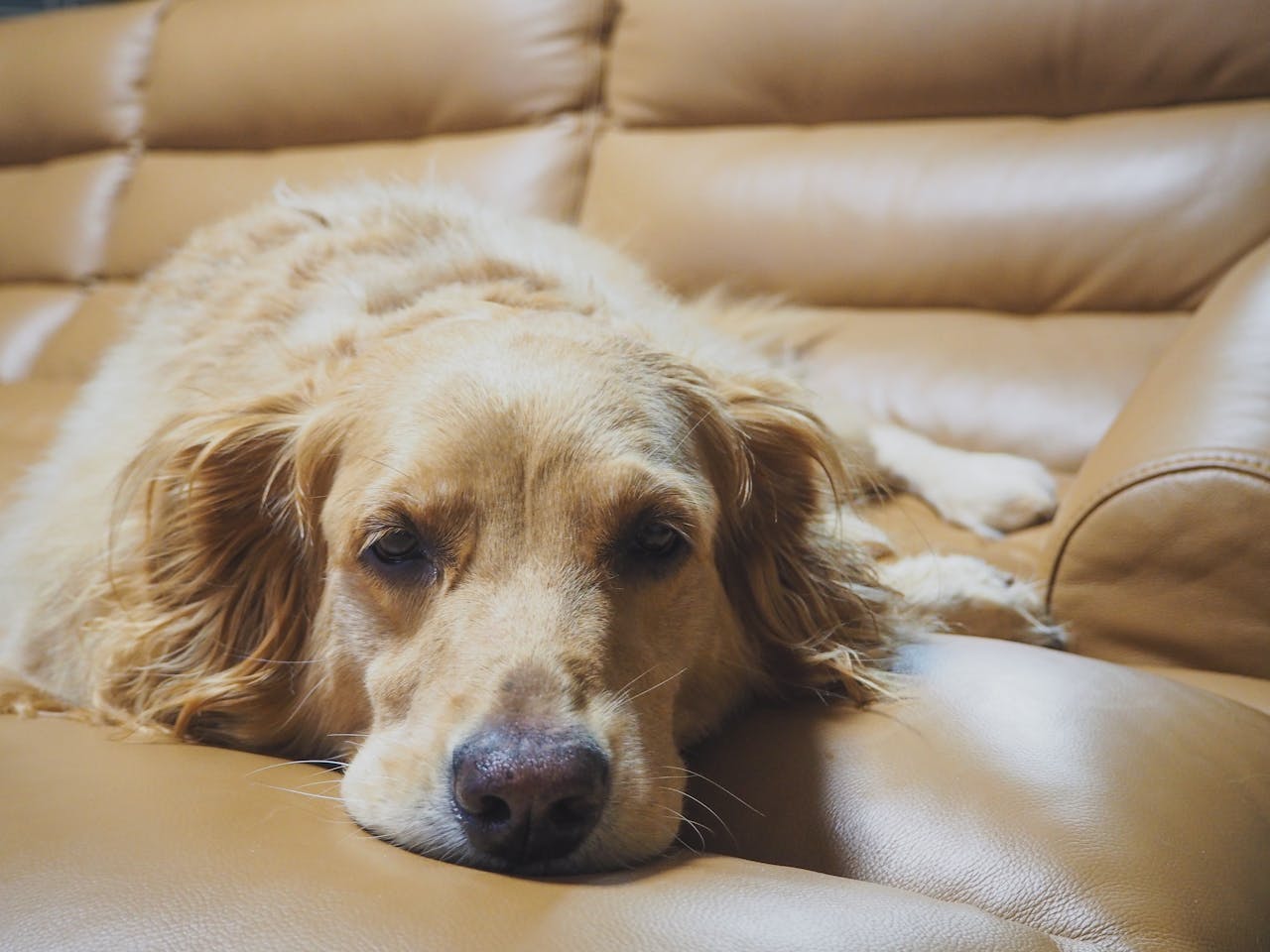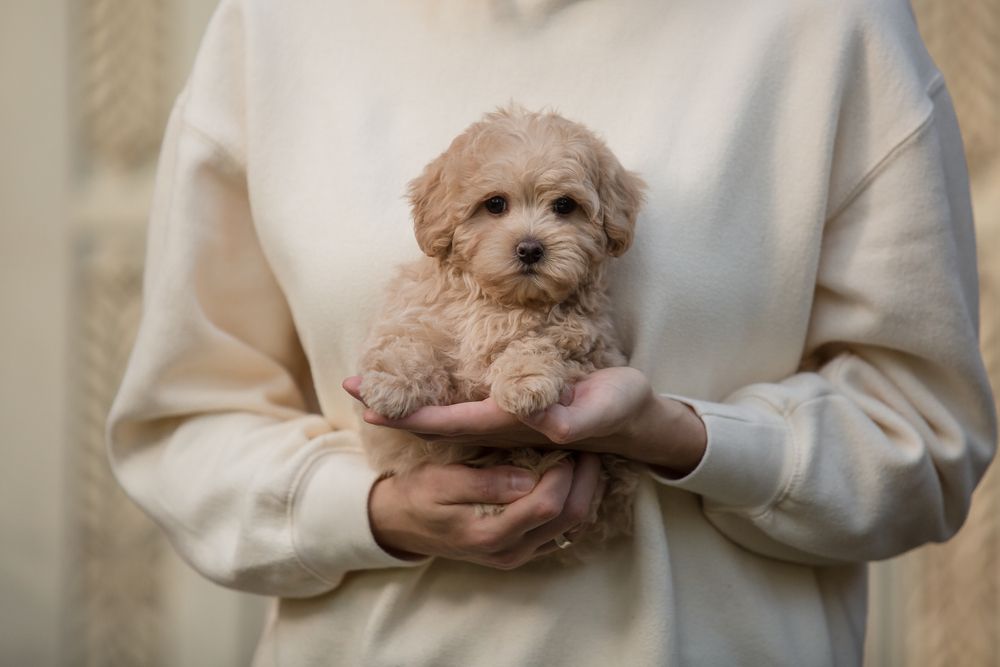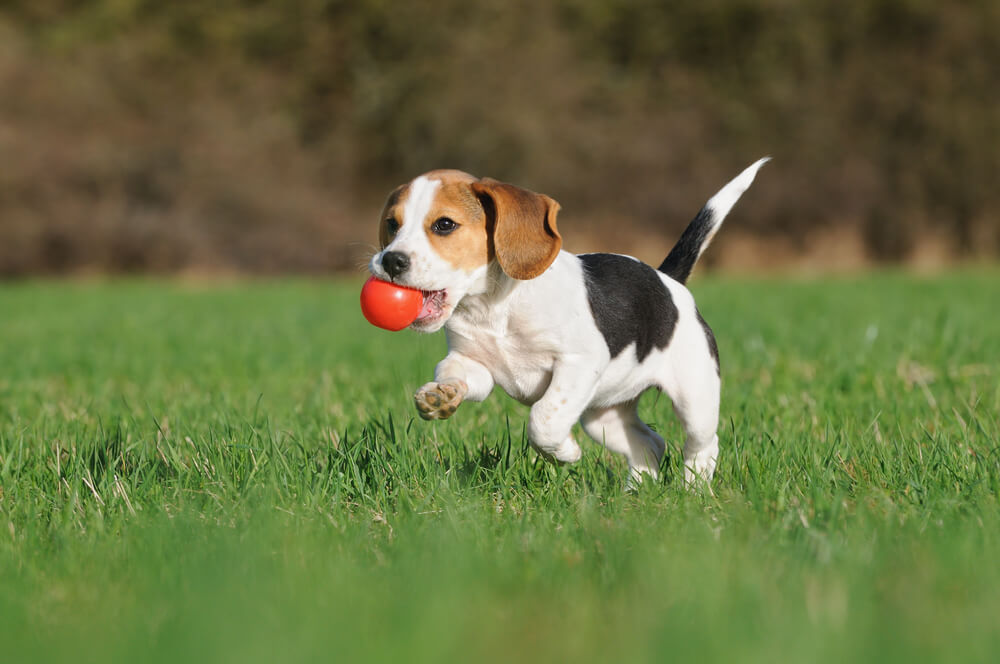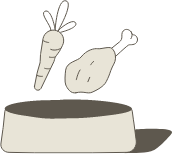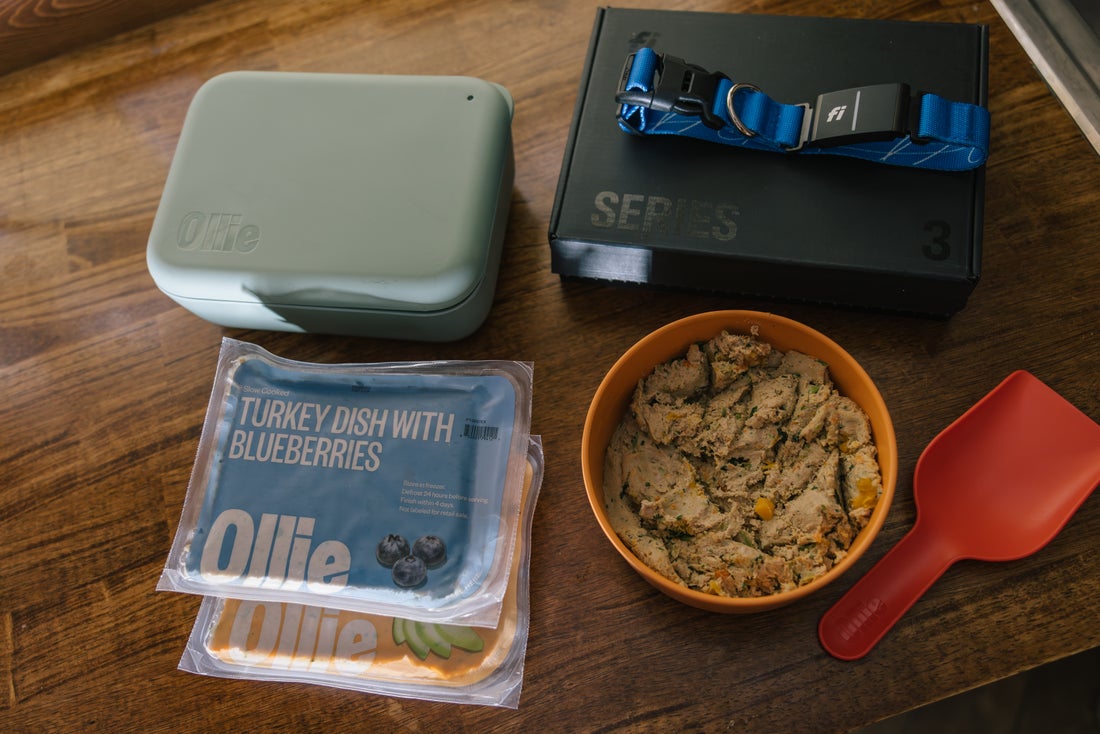Hey Ollie blog readers! We’re offering you an exclusive 60% OFF your starter box! Try now!
You head outside for the usual potty break, and then you notice it, your dog’s poop is bright orange. Naturally, your first thought is: Is something wrong?
The short answer is that orange dog poop isn’t always a reason to panic, but it’s definitely worth paying attention to. Stool color can tell you a lot about what’s going on inside your dog’s digestive system. Sometimes it’s as simple as what they just ate. Other times, it can point to something that needs a vet’s attention.
In this guide, we’ll walk through the most common reasons your dog’s poop might turn orange, when to take it seriously, and what to do next. Because when something looks off in the yard, it helps to know what you’re dealing with.
What Normal Dog Poop Should Look Like
Healthy dog poop is usually medium to dark brown, log-shaped, and fairly firm. This color comes mostly from bile—a digestive fluid produced by the liver and stored in the gallbladder—that breaks down fats in your dog’s food. As bile moves through the intestines and gets absorbed, it naturally turns the stool brown.
Of course, the exact color and texture can vary depending on what your dog eats, how hydrated they are, and how quickly food moves through their system. A little variation from day to day is normal.
But if you notice your dog’s poop turning orange, or orange with mucus, or orange and loose—it means something has shifted. Whether it’s dietary, digestive, or something more serious, that change in color is your dog’s way of letting you know that their gut might need some support.
Why Is My Dog’s Poop Orange? (Top Possible Causes)
Orange poop in dogs can be surprising, but it’s not always a sign of illness. Below are the most common reasons your dog’s stool might take on a tangerine tint:
1. Diet-Related Changes
Has your dog recently eaten carrots, sweet potatoes, pumpkin, or even turmeric? These brightly colored foods can tint stool orange, especially when fed in larger amounts. Chicken and rice, while gentle on the stomach, can sometimes also cause stool to appear lighter or more orange than usual.
Some dog foods or treats contain artificial colorings or added beta-carotene (a pigment found in orange vegetables), which can also affect stool color.
2. Bile Duct or Liver Issues
If your dog’s poop is orange for more than a day or two and hasn’t eaten anything unusual, it could be related to bile production. Bile starts out yellow-green and turns brown as it helps digest fat. If bile isn’t released properly due to a liver or bile duct issue, stool can come out orange or clay-colored instead.
3. Food Moving Too Quickly Through the Gut
Sometimes food moves too fast through the digestive system, not giving bile enough time to do its job. This can result in poop that’s lighter or orange, often with a softer consistency. It may happen after a sudden diet change, mild GI upset, or stress.
4. Medications or Supplements
Certain medications, like antibiotics, antacids, or high-dose vitamin A, can alter digestion and stool color. If your dog recently started something new, that could be the cause.
5. Digestive Inflammation or Irritation
If your dog’s digestive tract is inflamed from a virus, food sensitivity, or parasite, the stool can become loose, orange, or even contain mucus. This is more likely if the orange poop is also soft or foul-smelling.
Is Orange Dog Poop an Emergency?
In many cases, orange stool is temporary and not cause for alarm, especially if your dog is eating normally, acting like themselves, and recently had a diet change. That said, there are times when orange poop can signal something more serious.
Here’s when to call your vet:
- The orange color lasts more than 48 hours without an obvious cause
- Your dog also has vomiting, diarrhea, or signs of pain
- Your dog seems lethargic or stops eating
- The stool is orange and greasy, which could point to pancreas or liver trouble
- You see mucus, blood, or black specks in the stool
- The poop has a strong, unusual odor
Any major change in poop that sticks around, or comes with other symptoms, deserves a check-in with your vet. If possible, snap a photo of the poop and bring a stool sample to your appointment.
Orange Diarrhea in Dogs: What It Might Mean
If your dog’s poop isn’t just orange, but also loose or runny, that’s a sign their digestive system is struggling to do its job. Diarrhea means the intestines are moving food too quickly, which can prevent proper nutrient absorption and change stool color, especially if bile doesn’t have time to fully break things down.
Here are a few common causes of orange diarrhea:
- Gastrointestinal Inflammation
Inflammation from a virus, food intolerance, or bacteria can irritate the lining of the digestive tract. This can lead to fast-moving, orange-tinted diarrhea. - Food Allergies or Sensitivities
If your dog recently tried a new food, treat, or table scrap, their system might not be happy with it. Some ingredients—especially dairy, wheat, soy, or fatty meats, can cause digestive upset. - Parasites or Infections
Worms, giardia, or bacterial overgrowth can all result in abnormal stools. These cases usually also include other signs like gas, mucus, or frequent bowel movements. - Sudden Diet Change
A quick switch in food (even to something healthier) can throw off your dog’s gut bacteria and cause diarrhea. Gradual transitions are key for stability.
When your dog has orange diarrhea, it’s especially important to watch for signs of dehydration. Diarrhea can cause fluid and electrolyte loss, especially in puppies and senior dogs. If the diarrhea continues beyond a day or two, or your dog becomes lethargic, give your vet a call.
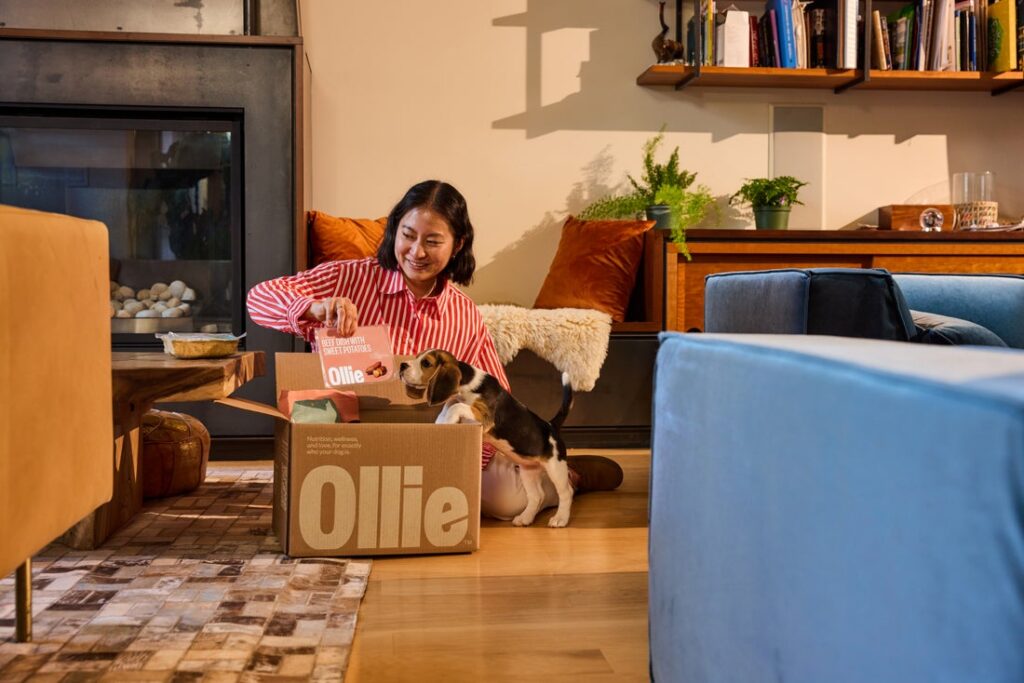
What to Do if Your Dog Has Orange Poop
If you spot orange poop in the yard or litter box, don’t panic. Instead, follow these simple steps to help figure out what’s going on and decide whether vet care is needed.
1. Look at What They Ate
Think back over the past 24–48 hours. Did your dog have anything new or orange-tinted? Carrots, sweet potatoes, chicken and rice, turmeric, pumpkin, or a new chew? If so, it’s likely diet-related.
2. Take a Photo
It may sound odd, but a photo of your dog’s stool can be super helpful for your vet, especially if the color changes before you can bring in a sample.
3. Monitor Behavior
Is your dog eating, drinking, and playing like usual? Or are they showing signs of discomfort, bloating, or fatigue? Normal behavior is usually a good sign.
4. Watch for Additional Symptoms
Orange poop with vomiting, diarrhea, loss of appetite, or blood is more concerning. If you see any of these, contact your vet sooner rather than later.
5. Bring a Stool Sample If Needed
If your vet asks to check for parasites or infection, collect a fresh stool sample in a sealed plastic bag or container.
6. Keep Meals Simple
Stick to bland, familiar food for a day or two. Avoid rich treats or fatty table scraps, which can irritate the gut even more.
How Diet Affects Stool Color
One of the most common reasons your dog’s poop turns orange is diet. What your dog eats doesn’t just fuel their body, it shapes their digestion, gut health, and yes, even poop color.
Here’s how diet can impact stool color:
- Brightly Colored Foods
Ingredients like carrots, pumpkin, sweet potatoes, or turmeric can tint your dog’s stool orange. These changes are usually harmless and temporary. - Artificial Dyes in Treats or Kibble
Many processed foods use artificial coloring that can show up in your dog’s poop. Orange or red dyes are especially common in some bargain-brand treats. - Sudden Food Changes
Switching your dog’s food too quickly can cause gut upset and lead to soft, orange stool. A gradual transition gives their digestive system time to adjust. - Low-Quality Fillers
Corn, soy, and meat byproducts don’t just offer less nutrition — they can also create more inconsistency in digestion and bowel movements. - Fatty or Rich Foods
Table scraps, greasy meats, or dairy can lead to irritation or inflammation, causing loose, discolored stool. Even “harmless” bites from your plate can be too much for your dog’s gut.
Bottom line: if you’re seeing weird colors or textures in your dog’s poop, the first thing to look at is what they’re eating. A simple, high-quality diet makes a noticeable difference in what you see in the yard.
Why Fresh Food from Ollie Helps Support Digestive Health
We hear it all the time from dog parents: “Ever since switching to Ollie, my dog’s poop is so much better.” That’s because Ollie focuses on gut health from the bowl up.
Here’s what makes Ollie different:
- No fillers. No artificial colors.
You won’t find any mystery dyes or cheap fillers in our recipes—just real, whole ingredients. - Vet-crafted for digestibility
Every Ollie meal is designed by veterinary nutritionists to support gut health and regular digestion. - Gently cooked to keep nutrients intact
Our food is slow-cooked at low temperatures, making it easier for your dog to absorb nutrients and easier on sensitive stomachs. - Rich in fiber and natural moisture
Ingredients like spinach, carrots, pumpkin, and blueberries help support healthy digestion and firm, consistent stool. - Portion-controlled for your dog’s needs
Ollie meals are tailored to your dog’s size, age, activity level, and goals. That means less guesswork—and fewer surprises on your walks.
If orange poop is showing up because of poor digestion or food sensitivities, a fresh food plan like Ollie can help reset your dog’s gut and support long-term health.
Don’t Panic, Just Pay Attention
Seeing orange poop in your dog’s yard deposits can be jarring, but most of the time, it comes down to something they ate or a minor digestive hiccup. Still, it’s important to pay attention to what your dog’s body is telling you.
If the change is short-lived, your dog is acting normal, and they recently had colorful foods like carrots or pumpkin, it’s likely nothing to worry about. But if orange poop sticks around or comes with other signs, like diarrhea, vomiting, or fatigue, it’s worth checking in with your vet.
A consistent, fresh diet made with real, easy-to-digest ingredients can help reduce stool changes and keep your dog’s gut happy.
Tired of guessing what’s causing weird poop? Start with better food.
Fresh meals made with real ingredients and no fillers, just what your dog’s body needs for smoother digestion and healthier poops.
Frequently Asked Questions
Can chicken and rice cause orange poop in dogs?
Yes. While chicken and rice is often used as a bland diet, it can lead to lighter or slightly orange-colored stool, especially when fed alone or for several days. It’s usually nothing to worry about if your dog seems otherwise healthy.
Is orange poop in dogs a sign of liver problems?
It can be. If the stool remains orange and your dog shows other signs like lethargy, vomiting, yellowing of the eyes or gums, or appetite loss, liver or bile duct issues may be involved. Always contact your vet if you’re unsure.
How long should I wait before calling the vet?
If your dog has orange poop but no other symptoms, monitor for 24 to 48 hours. If the color persists, or your dog has vomiting, diarrhea, or behavior changes, give your vet a call.
Can carrots or pumpkins turn dog poop orange?
Absolutely. These are healthy foods, but their rich color can temporarily tint stool orange. It’s not harmful and usually clears up once the ingredient is digested and passed.
What does orange mucus in dog stool mean?
Mucus is often a sign of inflammation in the colon or lower intestines. If the mucus is also orange, your dog may be experiencing digestive irritation or food intolerance. It’s best to monitor closely or consult your vet.
Tagged As:
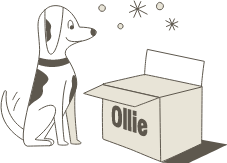
The nutrition your dog needs,
the food they want.

Enjoying our articles? Subscribe our Newsletters and get new articles directly to your inbox
You might also like
9 October 2025
4 MINS READ
How Fresh Food Can Help Soothe Your Dog’s Allergies
As a pup parent, watching your dog suffer from the constant discomfort of allergies is always distressing. The endless scratching, irritated skin, and digestive upset can take a toll on your pup�…
by Ollie Pets
18 September 2025
4 MINS READ
Is Fresh Dog Food Easier to Digest?
Yes, fresh dog food is generally easier for dogs to digest than highly processed kibble. Because it’s made with whole ingredients, gently cooked, and free from unnecessary fillers, fresh food supp…
by Ollie Pets
18 September 2025
5 MINS READ
Can I Rotate Fresh Dog Food Flavors?
Yes, it’s safe to rotate fresh dog food flavors, and many dogs actually benefit from the variety. At Ollie, we offer multiple fresh recipes, like Beef, Chicken, Turkey, Lamb, and Pork so you can…
by Ollie Pets
